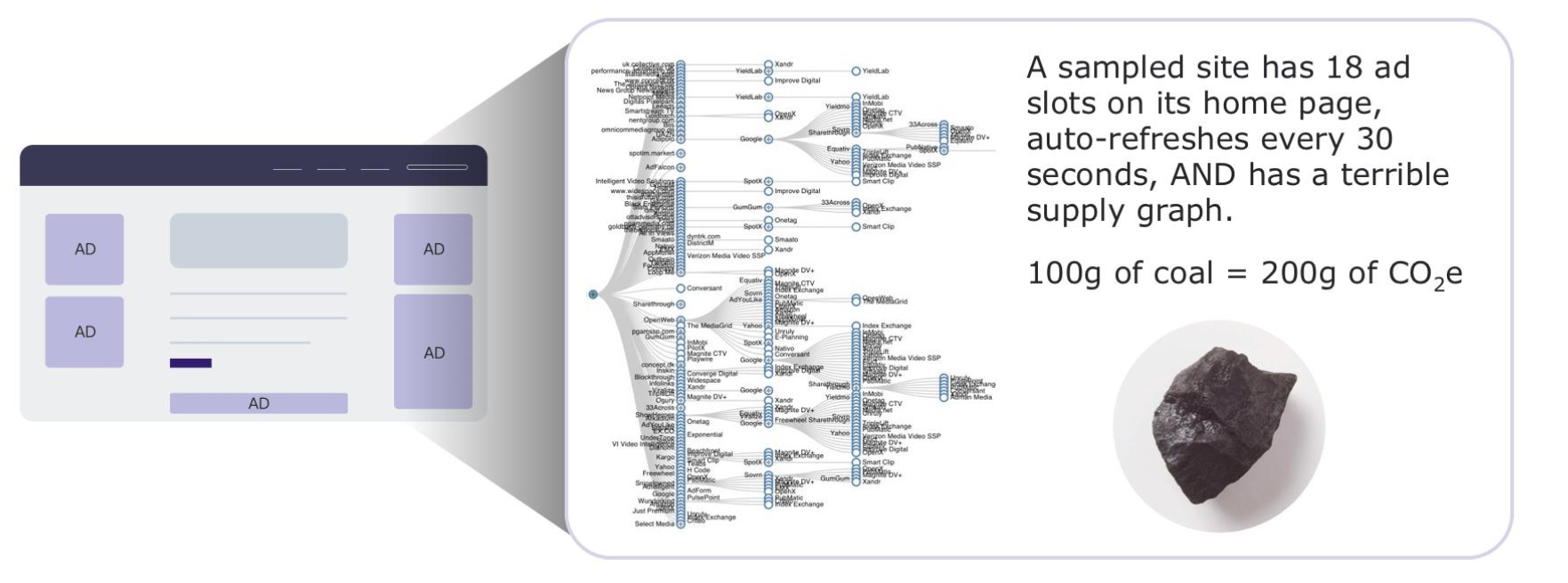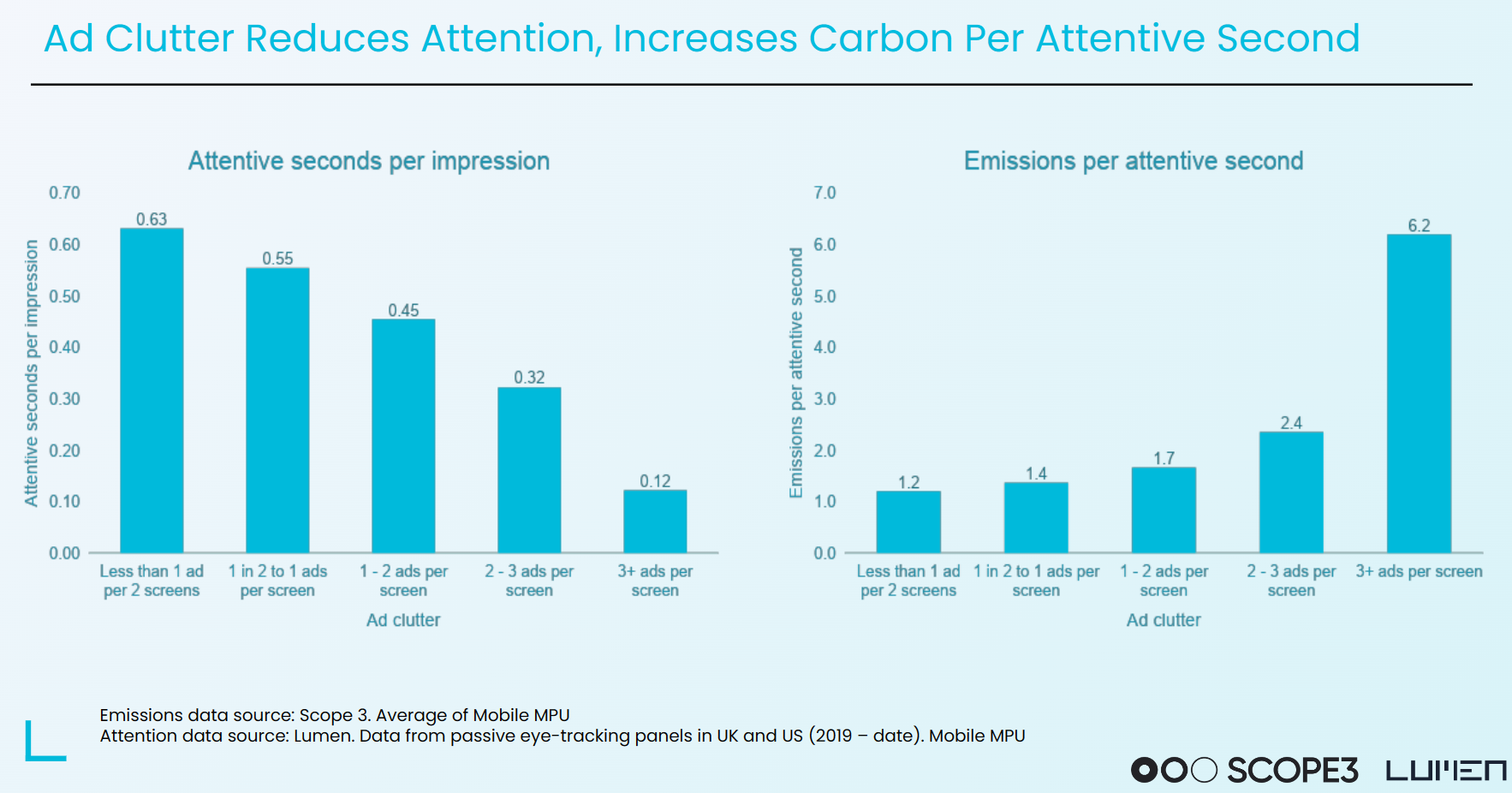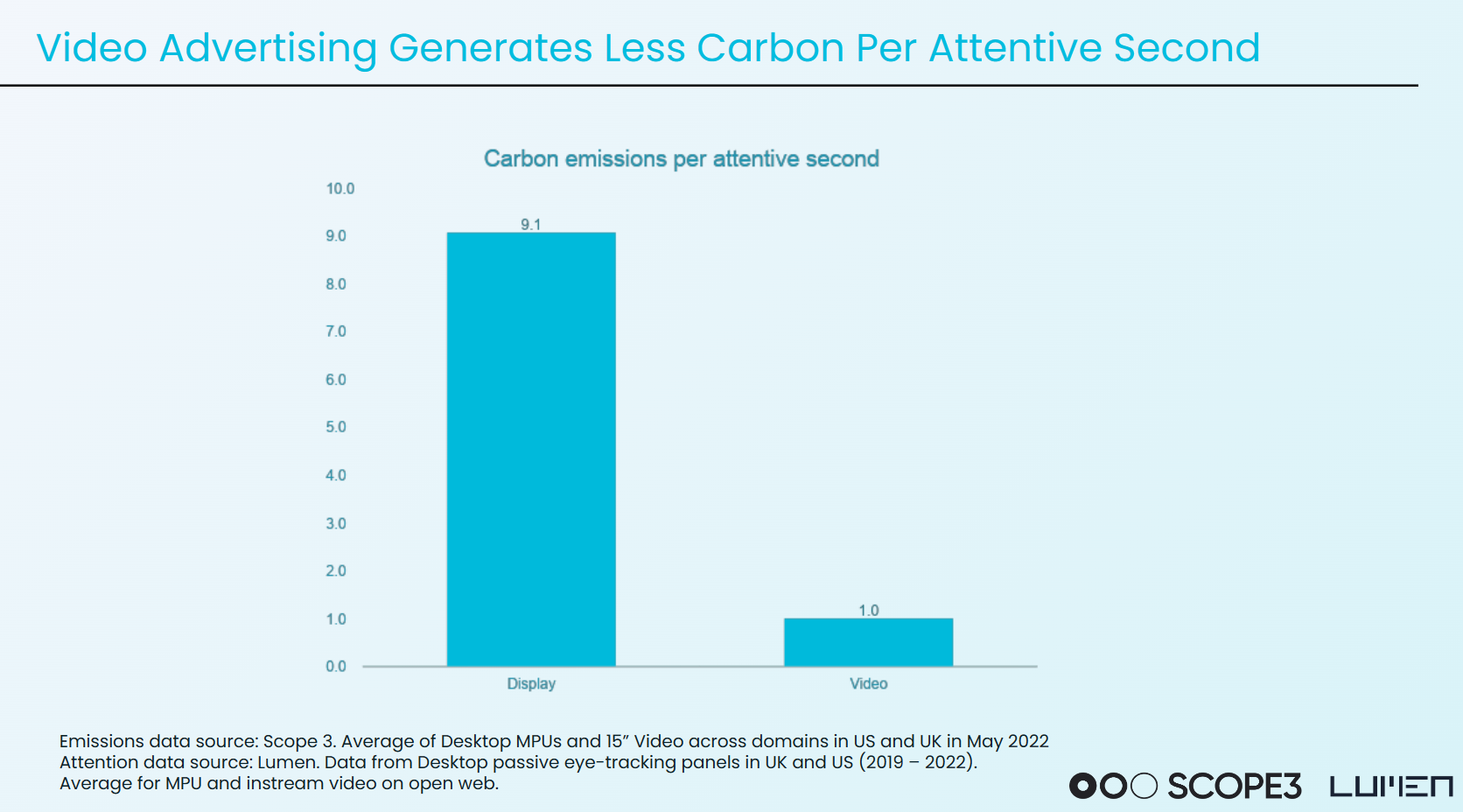Attention Technology and the Carbon Cost of Digital Advertising


Last week, Lumen CEO Mike Follett presented with Brian O’Kelley, the CEO of Scope3 about the carbon cost of attention at New Video Frontiers. The presentation focused on Scope3’s work on building a more eco-friendly supply chain for digital advertising and Mike broke down how attention technology can optimize ad campaigns to guarantee a smaller carbon footprint.
The simple secret to greener ads? Figure out where your ads get seen. By combining attention technology with carbon tracking, advertisers can build a healthier digital ecosystem with fewer, better ads that get more attention while emitting less carbon dioxide.
With a domain analysis focused on attention metrics, advertisers can analyze where their dollars are best spent and, with a technology partner like Scope3, conduct a carbon footprint analysis at the same time. This unlocks a new kind of ad efficiency that optimizes for both the outcomes and the carbon impact of your ad campaigns.
Brian started the presentation by discussing how digital advertising has a carbon footprint just like everything else. Overall, the internet and the systems that support it are estimated to make up about 4% of total carbon emissions.
Rather than traditional supply chain activities like manufacturing, assembly, and transportation, digital advertising creates a carbon footprint by driving traffic to websites that are dependent on servers with high electricity bills and, subsequently, high emissions. Scope3 estimates that every ten seconds spent on a website with 18 ad slots generates 200 grams of carbon or the equivalent of 100 grams of coal.

Scope3’s research proves that when ads get delivered to domains that don’t deliver results, ad waste happens to both budgets and the environment.
This is why it’s so important to measure the carbon cost of attention by combining carbon footprint tracking with attention metrics. As Mike explained, the math can be pretty simple: divide the carbon cost per impression by the attentive seconds per impression. This gives you the carbon cost per attentive second, which can shows a clear picture of which domains and which ad formats are most likely to drive high attention at a lower carbon cost.
There are two primary factors that Lumen analyzed when it comes to the carbon cost of attention: ad clutter and ad format.

We’ve found over and over that if there are more ads on a website, visitors pay less attention to those ads. In fact, they simply see them less often. That’s why, as part of Lumen’s attention technology suite, we analyze the density of ads per domain, which we call ad clutter. More ad clutter means less attention, but it also means a higher carbon footprint: when there are more ads per website, there are more back-end systems being used to keep things running.
If your media model invests heavily in ad delivery to high traffic websites with high ad clutter, you might be driving higher carbon emissions for lower attention.

Our research with Scope3, after looking at the impact of display ads and video ads, revealed that video ads drives far higher attention than display ads – making it a greener ad format when considering total effectiveness and efficiency.
As the advertising technology world reckons with how to get better results in a changing landscape, the carbon footprint of the digital ecosystem is coming into focus like never before.
The goal of both Lumen’s attention technology solutions and Scope3’s carbon emissions measurement technology is the same: to understand the human impact of digital advertising beyond the screen. As advertisers enter this new era of the attention economy, this is a chance, too, to enter a new and greener era for digital advertising in general.
Want to learn more? Sign up to get more information about Lumen and Scope3’s solutions for measuring the carbon cost of attention.